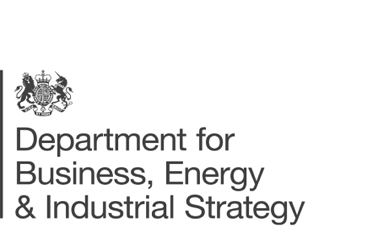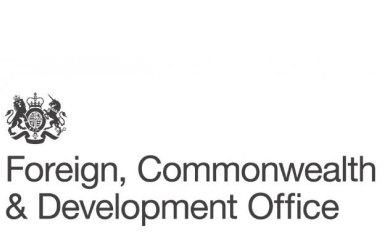The Build Digital Project aims to transform the Irish construction and built environment sectors by enabling all stakeholders, particularly SMEs, clients, and suppliers, to develop, maintain, and continuously improve their capabilities as digitally enabled, standards-based, agile, collaborative, and sustainable participants in the delivery of Project Ireland 2040.
Web pages of information related to the gradual introduction of BIM in public procurement under Ireland’s Capital Works Management Framework (CWMF) and defined in the 2023 contract reforms package supporting the National Development Plan (NDP)
Archive taken in 2017 of the UK BIM Task Group Website.
https://webarchive.nationalarchives.gov.uk/ukgwa/20170712122310/http://www.bimtaskgroup.org/
BIM Deutschland is the national center for the digitalization of the construction industry. It is the federal government’s central public contact point for information and activities relating to Building Information Modeling (BIM) and is operated jointly by the Federal Ministry for Digital and Transport (BMDV) and the Federal Ministry of Housing, Urban Development and Construction (BMWSB).
The Building and Construction Authority (BCA) champions the development and transformation of the built environment sector, in order to improve SingaporeÂ’s living environment. BCA oversees areas such as safety, quality, inclusiveness, sustainability and productivity, all of which, together with their stakeholders and partners help enables them to meet their mission to transform the Built Environment sector and shape a liveable and smart built environment for Singapore. BCA leads the transformation of the built environment sector through developing a highly competent professional workforce, adopting productive and game-changing technologies, and promoting the sectorÂ’s niche expertise overseas.
Integrated Digital Delivery (IDD) is the use of digital technologies to integrate work processes and connect stakeholders working on the same project throughout the construction and building life-cycle. This includes design, fabrication and assembly on-site, as well as the operations and maintenance of buildings. IDD is one of the key thrusts in the Construction Industry Transformation Map (ITM), and is aligned to Singapore’s efforts to transform the construction industry by creating a highly-skilled workforce trained in use of the latest architecture, engineering, construction and operations technologies.
The Singapore IDD builds on the use of BIM and Virtual Design and Construction (VDC), which have been implemented in many projects over the past few years. The BCA guide to IDD presented on this website includes and covers 4 main areas: Digital Design, Digital Fabrication, Digital Construction, and Digital Asset Delivery and Management. The IDD simplifies the different stages of a construction project with the integration of digital technologies that improve collaboration among stakeholders and construction efficiency, minimises construction mistakes and costly rework, and delivers smarter buildings. This website contains all of the links and resources related to BCAÂ’s current implementation of IDD.
https://www1.bca.gov.sg/buildsg/digitalisation/integrated-digital-delivery-idd
Plan BIM Peru is the programme supported and promoted by the Peru Ministry of Economy & Finance (MEF) for the successful adoption of BIM Methodologies in public infrastructure investment throughout the country. Within the framework of Plan BIM Peru, BIM is defined as a collaborative work methodology for the management of public investment information, which makes use of an information model created by the parties involved, to facilitate multi-year programming, formulation, design, construction, operation and maintenance of public infrastructure, ensuring a reliable basis for decision-making. BIM does not only refer to the use of technological tools. Its main objective is to ensure efficient information management. BIM is essential for the planning and execution of an investment, from the definition of asset requirements to the end of their use, covering their conception, development, operation, maintenance and disposal.
Plan BIM Peru is the policy measure that defines the national strategy for the progressive implementation of the adoption and use of BIM in the processes of the phases of the investment cycle developed by entities and public companies subject to the National System of Multiannual Programming and Investment Management, in an articulated and concerted manner, and in coordination with the private sector and academia. Plan BIM Peru was born as a political measure of the National Competitiveness and Productivity Plan, recognizing the need to modernize and digitize the systems for the formulation and evaluation, execution and operation of investment projects. The resources on the website help with the implementation of BIM.
PlanBIM Peru National Programme Website
The Ministry of Environment of the Republic of Lithuania (https://am.lrv.lt/) which is responsible for the formation of policy in construction sector progress, organization, coordination and controlling of its implementation in Lithuania has moved forward quite a lot in few years talking about digitalisation of Lithuanian construction sector. There is a need to create state-level digitalisation measures, ensure the leadership of public sector, strengthen the capacities and capabilities of public and private sector.
The Ministry has launched an informational website www.statyba40.lt (www.construction40.lt) for all initiatives regarding the digitalisation of Lithuanian construction sector. BIM is one of the key elements of Statyba 4.0. The Lithuanian term Statyba 4.0 (in English Construction 4.0) refers to the digitalisation of the construction sector.
At the moment The Ministry of Environment of the Republic of Lithuania with partners Vilnius Gediminas Technical University and Kaunas University of Technology (two leading technical universities in Lithuania), State Enterprise Lithuanian Road Administration, State Enterprise Turto bankas and Public Body Construction Sector Development Agency is implementing project “Creation of the measures to increase efficiency of the life cycle processes of public sector construction works using Building Information Modelling (BIM)”. This project is also known as BIM-LT project . BIM-LT project has begun in early 2019 and the end date is 2023. The activities of BIM-LT project include preparation of free state-level digitalisation measures: BIM normative documents, Lithuanian national construction information classification system (also known as NSIK), BIM methodological documents for public procurement, the methodology for evaluation and monitoring of BIM benefits and training related to the application of the BIM normative documents, NSIK, BIM methodological documents for public procurement, the methodology for evaluation and monitoring of BIM benefits. BIM-LT project has also a Consultative Committee which is represented by public sector clients and design and construction firms. There are also consultations with public included in the activities of BIM-LT project (More information about BIM-LT project following the link: https://statyba40.lt/titulinis/bim-lt-projektas/)
The Ministry of Construction (MOC) is a government ministry in Vietnam responsible for state administration on construction, building materials, housing and office buildings, architecture, urban and rural construction planning, urban infrastructure, public services; and representing the owner of state capital in state-owned enterprises. The Institute of Construction Economics, a part of the MOC, sets the National Level policy and Roadmap for BIM in Vietnam with the support of the BIM Steering Committee. The Vietnam BIM Roadmap was proposed to the government and was approved in Decision no. 2500/Q?-TTg dated December 22nd 2016 by the Prime Minister.
The Vietnam BIM Website, hosted by the Ministry of Construction (MOC) and run by the BIM Steering Committee contains all of the coutries latest information, documentation and resources related to the countries BIM Strategy. This website also includes the Vietnam BIM roadmap document.
The National Institute of Building Sciences (NIBS) initiated the U.S. National BIM Program (NBP or Program) to bring industry stakeholders together to achieve critical digital transformation throughout the entire lifecycle of designing, constructing, and operating the built environment. The Program concept has evolved through conversations and collaborations with leading organizations and communities, involving both the public and private sectors, spanning a diverse cross-section of asset/project types. This effort has recently accelerated combined with significant increases in interest from the owner community throughout the U.S., including both building and infrastructure owners.
The National Institute of Building Sciences is leading the development and dissemination of the next-generation of practice standards and processes for the built environment. The U.S. National Building Information Management Program will provide a step-change in capacity, creating a platform and community to support for digital innovation. Building information modeling is now a widely used technology providing a data foundation for increasingly digitized processes, yet practices and procedures across the architecture/engineering/construction/operation (AECO) marketplace operate under no common standards for data formats. This program offers the opportunity to improve the relationships, performance and profitability of the increasingly digitized U.S. AECO industry.


